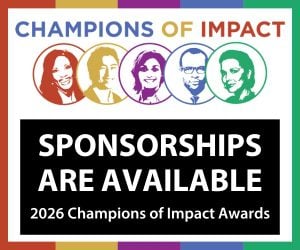While environmental issues such as recycling, energy efficiency and global warming are important; experts are urging low-income and minority communities to set their sights on inconspicuous environmental issues.
Increased carbon emissions leading to decreases in air quality; toxic run-off polluting water sources; uncollected garbage or garbage landfills close to homes are just a few issues urban communities face.
Many reasons point to environmental predicament accumulations in low-income or minority communities. Alan Walts, deputy director of office of enforcement and compliance assurance, United States Environmental Protection Agency (EPA), Region 5 suggests that densely populated areas consisting of more vehicle traffic, small businesses and manufacturing simply brings more problems.
Walts further validates the idea that due to economics and historical segregation, more minorities live near current or past toxic sites giving rise to harmful environmental impacts.
In decades past, individuals employed by factories would move their families closer to their job. While many manufacturing industries have transitioned to new technologies or vanished, much of their effects are left behind affecting the respective communities.
Also, when it comes down to environmental problems or affordability, many families are forced to choose the latter. Unfortunately, the cost of housing is lower in an area that has less amenities and more issues present.
“People have to have priorities. If you have to provide for your family, you’re not necessarily going to be checking up on what the air quality is,” said Walts. “Environmental impacts are never going to be distributed evenly because the impacts will be highest nearest facilities. To the extent that populations are segregated in terms of income or race, they’ll be different impacts for different folks.”
Unwanted, difficult to build land offers various opportunities for low-income areas — but at a high environmental cost. One of those costs is linked to areas becoming brownfields once businesses vacate.
By state and federal standards, a brownfield is considered real estate or property where redevelopment is inhibited because of either perceived or real contamination issues.
Brownfields in urban communities are not only an eyesore, but reduce the potential for area growth — being perceived as not only an environmental problem but economic liability as well. In Indianapolis Center Township alone, it’s estimated that 200 sites are considered brownfield areas.
“Indianapolis has a long industrial tradition of heavy development patterns in its urban core,” said Chris Harrell, Brownfield redevelopment coordinator, city of Indianapolis. “It’s left a bit of a patchwork of places that has contamination issues as recent as the early 70s before environmental regulation even began.”
Brownfields may appear to only focus on massive, old foundries, but can also include other types of industrial or commercial properties such as an abandoned gas station, dry cleaners or plating company.
When Indianapolis became the “Crossroads of America,” some neighborhoods were left heavily damaged. Harrell says one such area is the eastside’s Martindale-Brightwood area, which has a higher number of brownfield sites per land area.
Depending on the amount of contaminant left behind, it can cost up to and possibly exceed $250,000 to successfully clean up brownfields. One such blight located on Rev. Andrew J. Brown Ave. lead Martindale-Brightwood residents to come together to resolve a lead contamination issue. Such issues resulted in the formation of the Martindale-Brightwood Environmental Justice Collaborative.
According to Elizabeth Gore, chairperson of the collaborative, using information from the Marion County Health Department, her sub committee found that lead was linked to health issues such as learning disabilities, kidney infections and cancer.
From their strides in cleaning up their community, the collaborative was recently awarded a two-year grant of $97,840 by the EPA. That money will go towards reducing toxic pollutants, help communities understand the sources of exposure, create risk reduction activities and create partnerships for further improvements. The Improving Kids’ Environment organization will serve as the grant’s fiscal agent.
“This effort has been resident driven. Residents are informing each other about what’s happened in the past, what’s being done, and analyzing reports given by the EPA in terms of what they mean to the residents,” said Gore. “Environmental problems are a quiet way to destroy your community. We live in an older community where people have gardens. People are planting food and digesting things that are toxic. It’s not to alarm you, it’s to inform you.”
The Martindale-Brightwood Environmental Justice Collaborative has also recently received a $27,000 grant from United Methodist Church to conduct a statewide environmental justice conference in March 2009.
“Everyone has the right to a clean environment, it’s just figuring out how to make that happen. The barrier to making a difference is not that the population is minority; the barrier is that the problems are extremely complex. Communities should not feel disempowered by this,” said Walts.
For more information, call the Martindale-Brightwood Environmental Justice Collaborative at (317) 924-8042; City of Indianapolis Brownfields department at www.indygov.org; or the EPA Region 5 at (800) 621-8431 or visit www.epa.gov.






